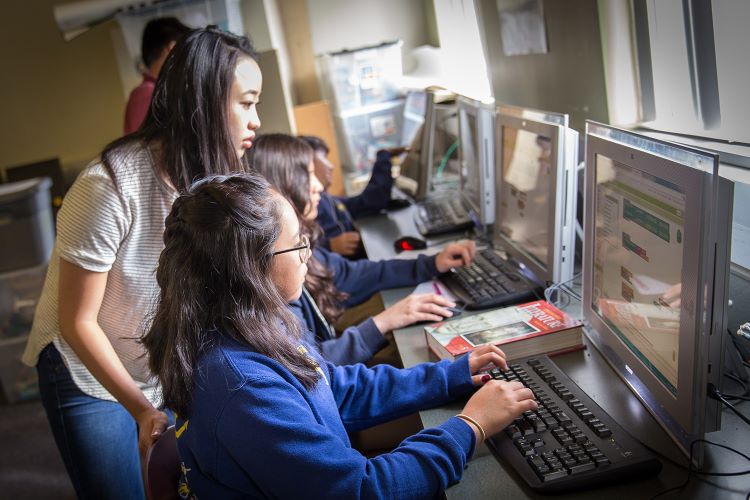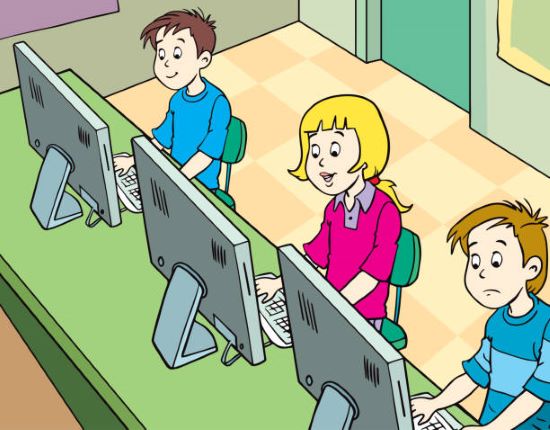What is Visual Coding for Kids? What are The Benefits of Visual Coding?


It’s simple to convince a child that they can understand what it takes to run the application or game they use and play on a daily basis, or the social networking platforms they can’t get enough of. But how do you convince youngsters to buy in? It’s a difficult task.
Those who’ve been successful in pushing things forward from talking to the following steps are likely to find the trip simpler as the truth becomes more concrete.
Then there’s the next challenge: convincing youngsters that they can code. They grasp what coding can achieve and are motivated to get started, but they quickly run against a screen full of empty space and things come to a standstill. And here, visual coding helps. In this article, you will learn what visual coding is for kids.


What is Visual Coding for Kids?
Visual coding allows you to code visually, or “graphically,” rather than textually, generally through the use of modules and drag-and-drop operations.
Visual coding allows children to clearly perceive the connection between the code block they insert and the action it performs. They’re no longer overwhelmed by what appears to be an enormous task ahead of them and instead are engrossed in the entertaining graphics at their fingertips.
Learning courses for your kids! Get a free trial here
Types of Visual Coding
The following are the types of visual coding:
Scratch
Scratch is a famous visual coding solution for children. It’s simple to get started, contains colourful blocks, can create enjoyable projects, and has an active community for help and inspiration.
We’ve covered scratch sprites and other block-based programming examples, but another entertaining Scratch project might be a “Whack em” game in which players utilise video sending and their own motions to whack sharks floating in the water.
LEGO Robotics
Did you know your kid may use LEGO to engage in visual coding? With LEGO Spike Prime, children may experiment with a variety of dynamic possibilities.
Again, drag-and-drop code pieces make it simple to learn coding ideas and foundations, especially for those who are too young to get into (or become enthused about) text-based programming language.
For example, children can begin with a blank workspace and create their software “block by block,” meaning that each block instructs their robot to do a certain action.
When the program is executed, the robot will carry out the activities in the sequence that they were programmed. Action blocks, for example, cause robots to move, produce sounds, flash images, or show photographs.
Also Read: Is Learning Dependent on Cognitive Development? Guide to Better Development
Sphero Bolt
While the preceding examples only use block-based programming, the Sphero Bolt (a controllable robot ball) has two visual programming modes: code blocks and draw.
With a draw mode form of visual coding, youngsters draw routes that represent instructions for their robots to follow rather than setting blocks. They accomplish this by utilising a drawing canvas to design motions for the Sphero to perform exactly as written.
They just sketch a square using their app if they want the Sphero to wander in a square. The same may be said of different forms, pathways, and patterns.
Then, of course, there’s code blocks mode, which is similar to Scratch in that it allows you to code using a drag-and-drop snap system to generate a series of events.
Unreal Engine Blueprints
Finally, older children and teenagers, as well as those with an interest in video games and game creation, may be interested in learning about Blueprints, which is the visual script language of programming within Unreal, the technology behind Fortnight and other popular titles.
Again, rather than words, coding is done by dragging, dropping, and linking visuals. Blueprints may be used to construct events like moving doors and switching on and off lights.
Seeing is Believing
Believing comes from seeing. Or how about seeing the code and becoming the code? But, in all sincerity, all idioms aside, we can’t possibly expect our children to be enthusiastic about anything if they can’t mentally picture themselves succeeding at it.
Sure, individuals must push and challenge themselves, as well as step outside of their comfort zones, but it all begins with creating something concrete. It’s motivation 101: don’t just order someone to do something; explain why it’s necessary and assist them in carrying it out.
Also Read: Daily Planner For Your Child During Home Quarantine
Benefits of Visual Coding
Here are some benefits of visual coding for kids:
Nurtures Creativity
Coding for children is an inherently creative process that begins with nothing and ends with something.
Programming, like painting or cooking, helps a youngster to gain joy from the activity. In the real world, our creative activities are frequently constrained by the resources we have at our disposal, such as the food we use when cooking or the canvas we use when painting.
However, with programming, where the virtual world is limitless, the only limitation is the child’s imagination. Because it reflects the capacity to combine old ideas with new answers, approaches, and thoughts, creativity serves as the basis for innovation, inventiveness, and leadership.
Makes Maths More Fun
It has long been considered that youngsters interested in programming should have strong maths skills. However, it appears that the opposite is also true: coding may help youngsters acquire maths abilities and make maths learning more interesting and exciting. Maths and coding are inextricably linked.
When your children engage in a coding competition, they use mathematical concepts and acquire strong mathematical thinking, which will benefit them in many aspects of their academic and personal lives.
Develops Problem-solving Skills
The ability to code opens up new avenues for issue solutions. Anyone, from beginners to pros, will tell you that creating codes may be difficult. When something doesn’t work well, youngsters learn to rapidly change it and try again in other ways through code. Coding also teaches children how to persevere with an issue and strive toward a solution. This problem-solving method is applicable in a variety of other disciplines.
Scientists, for example, tackle issues by developing hypotheses and testing them one by one. A programmer tinkers with his code, one element at a time, to see which one fixes the problem.
Enables Computational Thinking
Computational thinking is an organised and established strategy for identifying issues that may be used regardless of age or computer proficiency level. It promotes critical thinking and focuses on assisting students in developing and implementing techniques for understanding and fixing problems.
It’s “cross-disciplinary,” therefore it makes sense to start educating it in elementary school or even preschool. Within the same setting, all disciplines are organically merged for the pupils.
Conclusion
To ignite your child’s interest, show them what they can do using coding. Coding will allow students to accomplish everything, from developing games and applications to designing motions and much more. And, of course, it’s entertaining!
Even if your kid wants to pursue anything other than computer science when they grow into adults, their coding abilities will be useful in a variety of disciplines since coding teaches problem-solving, organising, arithmetic, narrative, design, and other skills.
Most significantly, learning to code turns children from passive consumers to inventive producers, with eyes that perceive every type of tech as more than simply a toy, but as a challenge to solve and a chance to create.
Learning courses for your kids! Get free trial here
Recent Posts
What are the Advantages of Online Teaching at The Real School?
In the article -"What are the Advantages of Online Teaching at The Real School?" we…
What is the Full Form of School?: Unveiling the Acronym
The term "school" carries profound significance in the realm of education, representing more than just…
What is Math Full Form?: Cracking the Code
Mathematics, often referred to as "Math," is a subject that elicits various reactions from students…
What is Full Form of Homework?: Decoding Academics
Homework, an integral part of the academic journey, often raises questions about its purpose and…
What is Full Form of Teacher?: Demystifying Education
In the intricate tapestry of education, teachers stand as the pillars shaping the intellectual and…
What is Real Education?: Discovering Its Essence and Impact
The concept of real education is evolving, transcending traditional views that equate it solely with…


